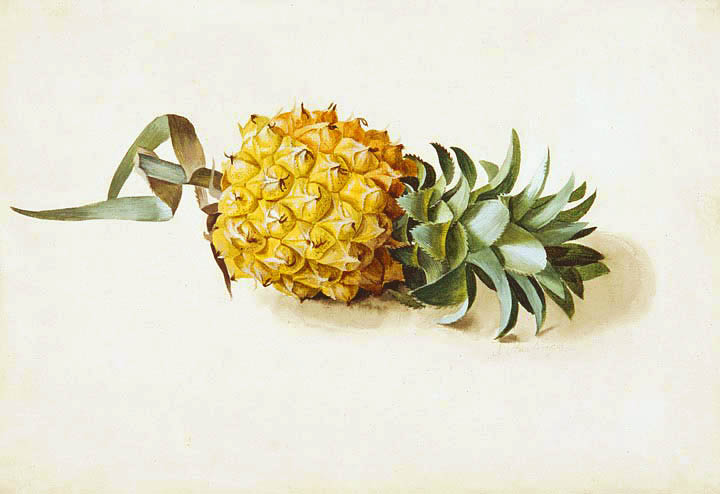
It’s the 17th century. You’re throwing a dinner party but you need something extra that shows off how rich and trendy you are. Naturally, you seek to rent a pineapple. The night of the dinner party soon arrives. The pineapple is placed atop its specially made stand at the centre of the table. You brush away a rogue maggot. The pineapple has started to rot a bit. Hopefully no one will notice… or try to eat it of course. Otherwise you’ll be forced to pay the full value of roughly £5,000!
A spiky discovery
Originally native to South America, the pineapple eventually spread to Central America, Mexico and the Caribbean islands. The first (recorded) European to come across one was Christopher Columbus in 1493, during his 2nd voyage to the Caribbean. Columbus’ voyages were being sponsored by Queen Isabella I and King Ferdinand II of Spain, so he brought one home to the Spanish court. It wasn’t long until wealthy Europeans were captivated by the pineapple’s exotic appearance and sweet taste.
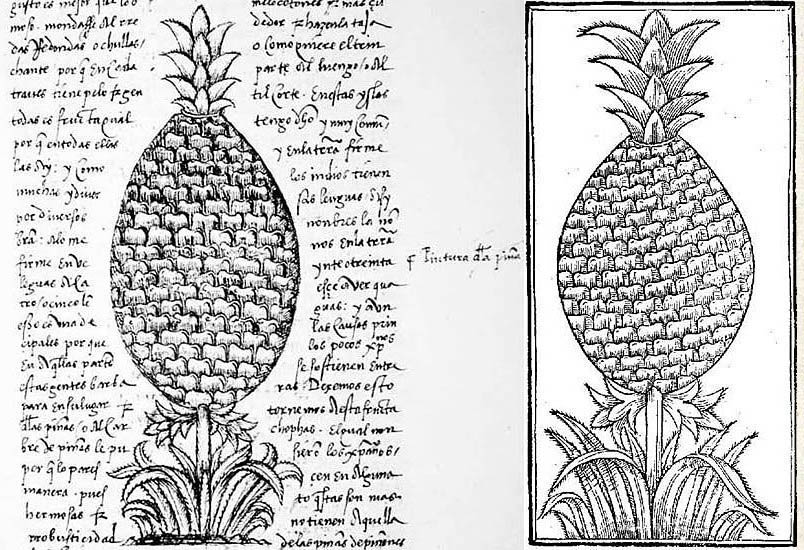
The origin of the word ‘pineapple’ (etymology)
The Latin and scientific name for the pineapple is ‘ananas comosus’. The first record of the word ‘pineapple’ being used in English dates back to 1398, although the term was originally used to describe what we would recognise as pine cones.
When Europeans started to encounter the fruit from the 1660s onwards however, they started to call them pineapples too because of their rough, spiky resemblance. The name stuck, and the term ‘pine cone’ had to be invented to replace the original meaning of the word ‘pineapple’.
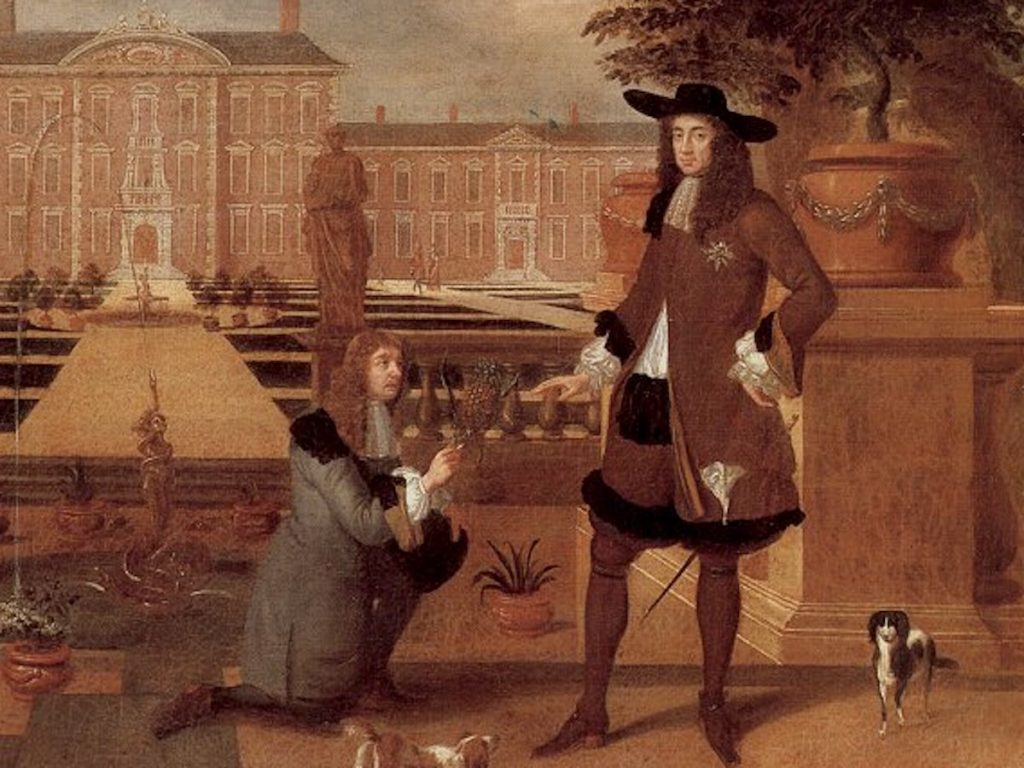
Charles II being presented with a pineapple by his gardener John Rose (1677)
Rent a pineapple!
Pineapples were famously difficult to transport and often spoiled during the long voyage across the Atlantic. Due to their rarity, the fruit became a symbol of luxury during the 16th and 17th centuries. Because pineapples were so pricey, the well to do class turned to renting them for the evening instead, and purely for decoration. Demand for pineapple-themed goods soon exploded, from teapots, ewers (a type of decorative jug) and jelly moulds, to ornately carved clocks, bookends and paintings.
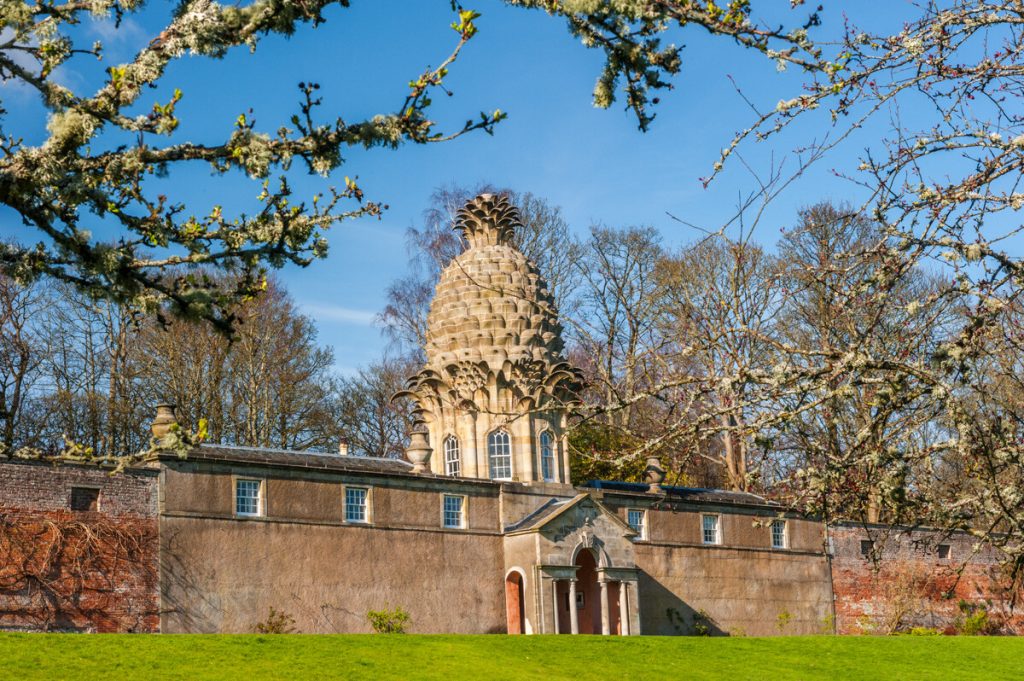
Pineapples in architecture
To have a pineapple adorning your mantlepiece or dining table came to represent wealth and good taste. The pineapple also became a popular motif of baroque and neoclassical architecture, appearing everywhere on carriages, stonework, gates and railings. You can even see pineapples atop the Western Towers of St. Paul’s Cathedral in London. Most impressive though perhaps, is the giant stone pineapple of Dunmore House in Falkirk, Scotland built in the 1780s by the Earl of Dunmore (above).
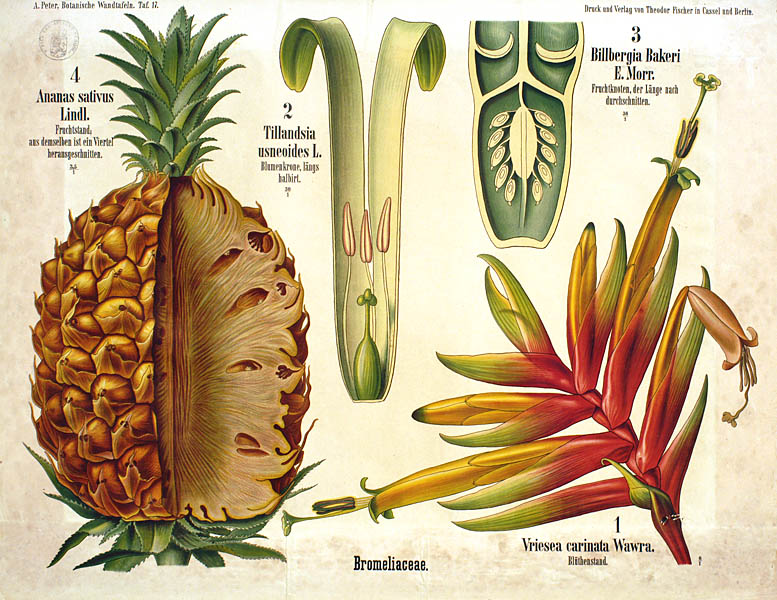
My hot house is bigger than yours
By the Georgian era, efforts to grow pineapples en-masse and within Europe were underway. Huge glass hot houses were invented with complex heating systems that warmed the air and soil. This created the ideal environment for pineapples to grow.
During the 19th and 20th centuries further advancements in transportation and agriculture made pineapples more accessible to the general public. The development of canning techniques pioneered by James Dole in Hawaii revolutionised the pineapple industry, making it a widely available and popular fruit across the globe today.
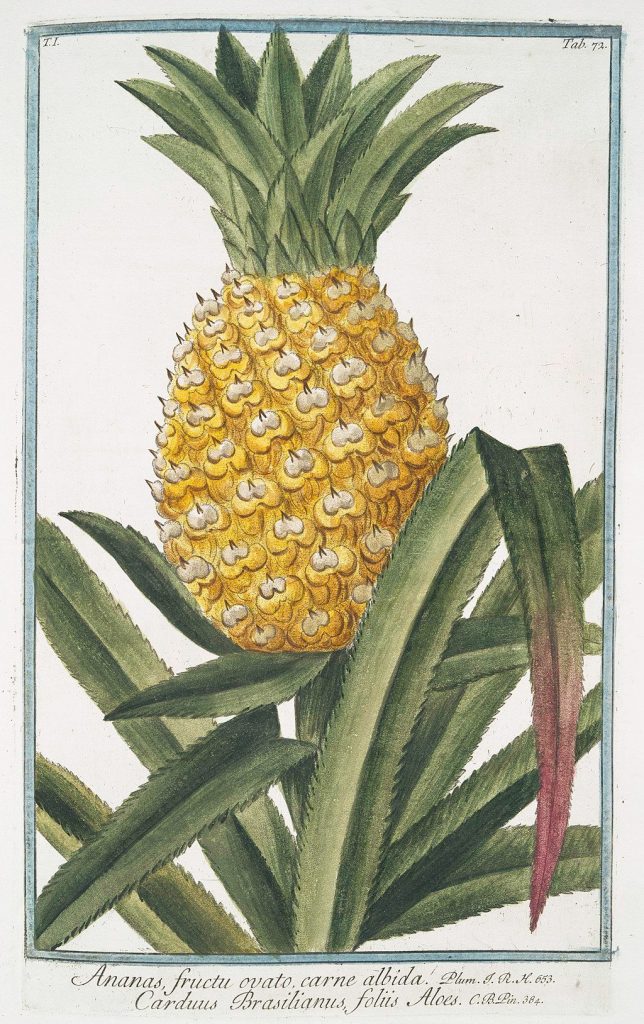


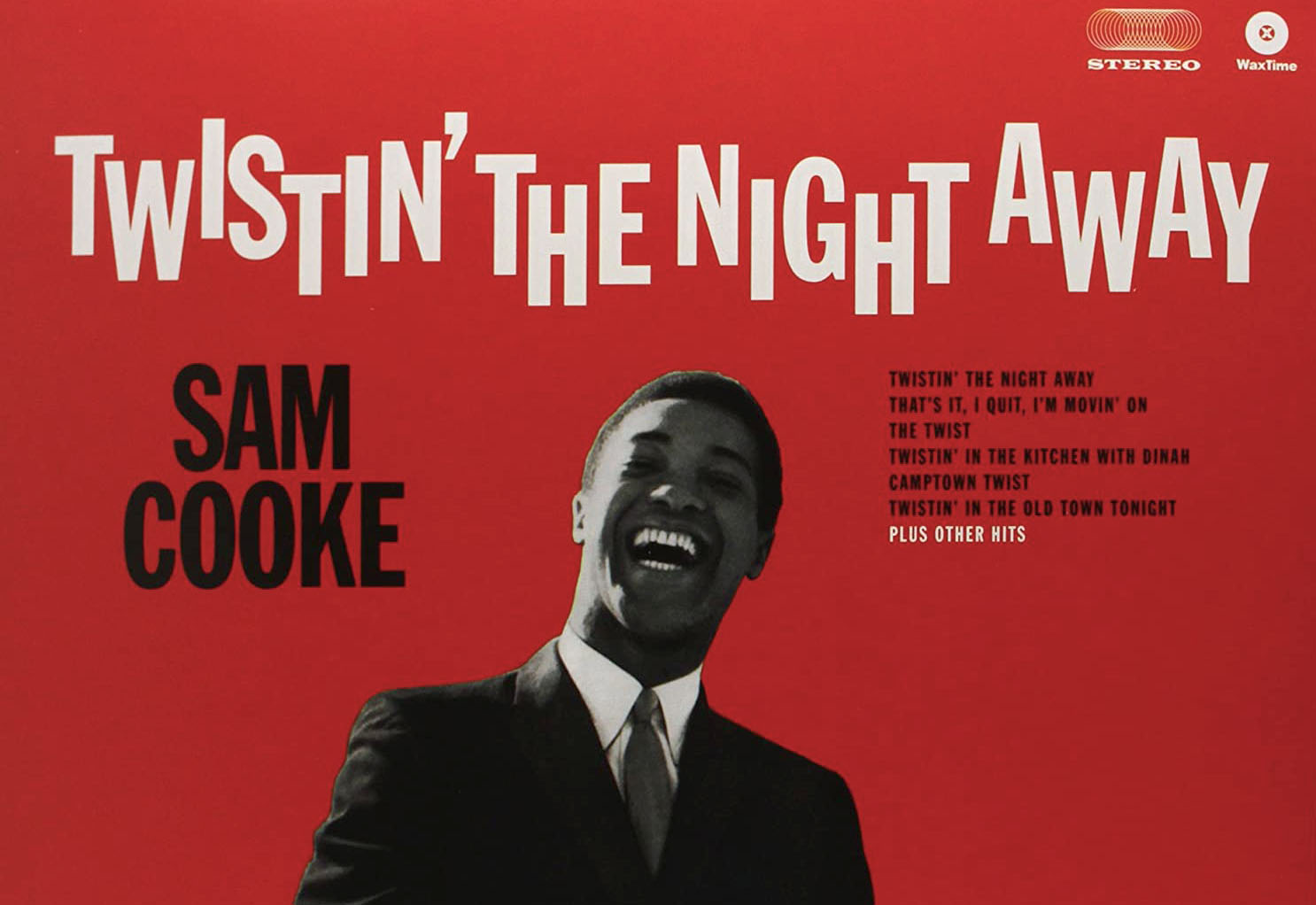
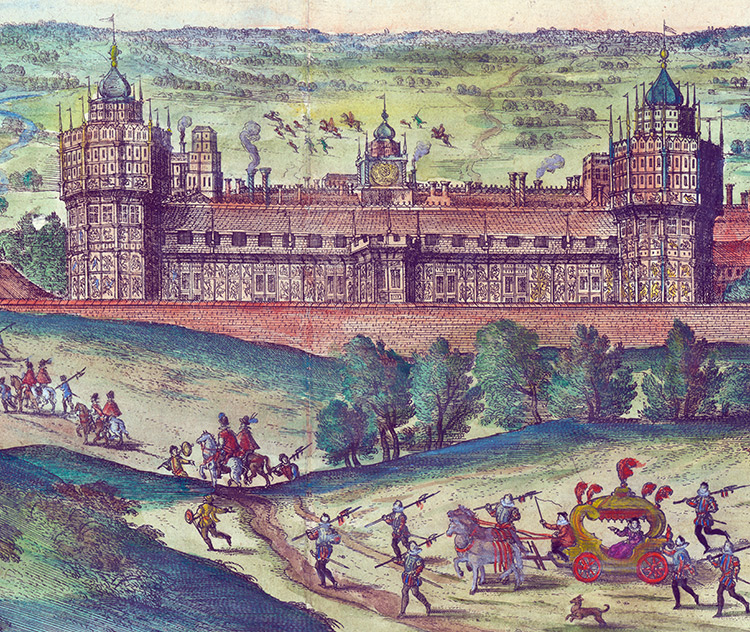
Leave a Reply